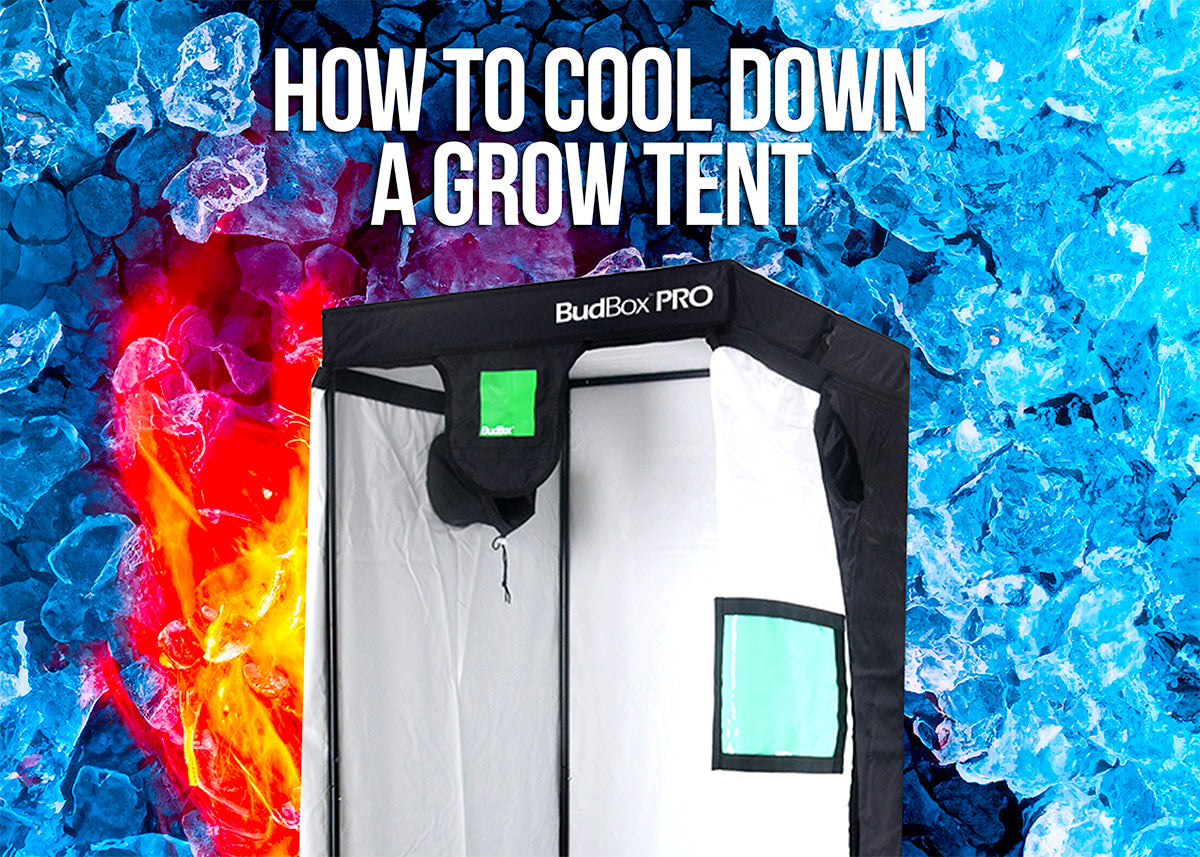Stay Cool: How to Keep Your Grow Tent Cool in Summer
Introduction
Are you struggling to keep your grow tent environment within optimal temperature ranges over the summer months? Keeping temperatures in the sweet spot is crucial for the health of your plants, but during the hotter periods of the year, indoor gardening can be a real challenge.
In this blog post, we delve into effective strategies that combat heat and work to keep your grow tent cool. Understanding how to maintain a cool grow tent in summer is one of the keys to successful indoor growing.
Timing Is Everything: Schedule Light Cycles During Cooler Periods
Timing your day and night cycles so that grow lights are active during cooler periods will reduce the heat in your grow tent without costing extra money: a simple grow room timer is all you need to program the lighting cycles for a single 600 watt grow light, and if you've got a bigger set-up, you should opt for a Quad Timer or a contactor.

By setting your lighting patterns to begin closer to the end of outdoor daylight hours, you can take advantage of the temperature drop that occurs during the night-time. This minimises the heat levels generated when grow lights are in operation, reducing the risk of heat stress.
Many plants commonly grown indoors begin the flowering process upon exposure to a twelve on / twelve off cycle. In this case, a lighting pattern beginning at around 8 o'clock at night and ending at around 8 o'clock in the morning would play a big role in combatting excess heat.
Harness the Power of LED Grow Lights to Minimise Heat
Upgrading to LED grow lights represents one of the best ways to reduce heat build-up in grow tents. When compared to traditional high-intensity discharge lamps (like HPS), LEDs emit much less heat, channelling that energy into extra light output. Most LEDs are also adjustable, straight out of the box, allowing you to reduce output levels when conditions are at their toughest.

Optimise Your Ventilation System
Extracting plenty of air from the grow space will naturally draw in cooler air from outside. Over-speccing your grow room fan will allow you to remove as much air as possible. Pair this up with a fan speed controller that's thermostatically controlled and your fans will work harder when needed, maintaining constant temperatures.

To keep your extraction system working as efficiently as possible, keep the ducting runs nice and straight. Curves in the ducting (especially tight bends) cause air to hit the sidewalls, generating extra friction. This reduces airflow while increasing noise levels: not good! A simpler and straighter extraction set-up will get the best possible performance from your duct fan.
Increase Air Circulation
Microclimates can create hot spots in your grow room, causing certain areas to experience high temperatures. Circulation fans allow you to distribute air evenly, making the environmental conditions in and around the grow space as equal as possible. By creating gentle air movements, proper air circulation strengthens the stems of your plants, toughening them up and making them more resistant to pests and diseases.

Remove Heat Generating Equipment From the Grow Space
Pointing the above-mentioned fans towards appliances that get hot, such as ballasts, grow lights and even chillers, helps to distribute any excess heat. However, keeping as many of these items as possible outside the grow tent is the best solution. Naturally, your grow lights will need to stay inside the tent! But running any ballasts or drivers remotely, outside the tent, can help to keep temperatures down.
Climate Control Systems: An Innovative Approach to Grow Room Cooling
Water-cooling climate control systems, like the Opticlimate, will keep temperatures dialled in regardless of the outside weather conditions. Equipment like this requires a fairly large investment and will also require some technical knowledge to set-up, as these units need to be connected to a water supply and a drain.
Opticlimate systems use heat exchange systems to cool grow tents down. The heat is transferred into water which is then sent down to a drain, removing it from the area. If you are growing in a larger sized grow tent, Opticlimate air conditioners are worthy of serious investigation; once the Opticlimate is up and running, you can push yields to previously unseen levels.
We've been stocking them and providing technical advice and expertise for a decade now, so get in touch and we can talk you through the whole process.
Increasing CO2 Levels
Supplementing with CO2 won't cool your grow tent down, but it will help your plants to cope with higher temperatures. CO2 is required by plants for the process of photosynthesis and is found in the atmosphere at around 400 parts per million. Increasing levels to 1200 PPM can have truly profound effects on photosynthesis rates, pushing growth as far as possible.
It's not uncommon for growers to see increases in yield of 20% or more when done properly! The heightened rates of photosynthesis allow plants to cope with temperatures higher than usual, causing them to thrive at 29 degrees Celsius or more, and making CO2 a true godsend in the summer.
Beginners should take a look at the Mother Nature CO2 Generator and the pros should investigate CO2 bottles and regulators.

Other Useful Additives
Silicon is a great additive generally, but it's essential in the summer months. Iike CO2, it's obviously not going to cool your grow tent down, but it will help plants to thrive in difficult conditions. Silicon works by strengthening individual cell walls, which improves the structural integrity of the whole plant. Expect to see thicker stems and stronger branches that can support lots of weight. There are quite a few silicon products to choose from, but our favourites are Plagron Silic Rock & Shogun Silicon.

